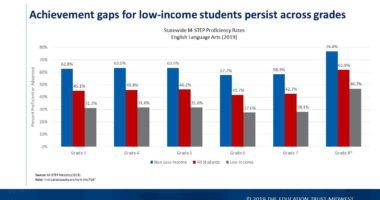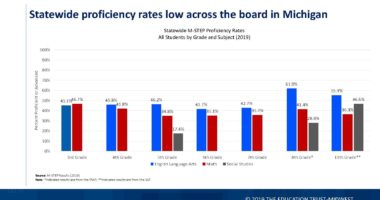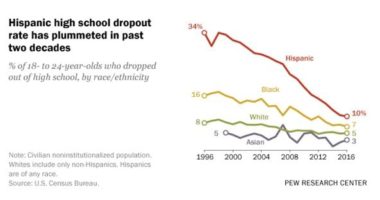Editorial: Schools are still missing the mark
The test results released this week by the Michigan Department of Education put into focus how much work is needed to improve student learning in the state. But there is an upside. The test, in its second year, is starting to give a consistent—and honest—record of how public schools are doing.
That is data the state didn’t have for a long time. The Michigan Student Test for Educational Progress (M-STEP) replaced the four-decade-old Michigan Educational Assessment Program last spring.
The new test is better designed to chart student growth and it’s a more rigorous measure of student knowledge. That brings the M-STEP more in line with national standardized tests.
Now that the M-STEP is in place, and most of the kinks have been worked out, the state should keep it for a while. State Superintendent Brian Whiston, along with some GOP lawmakers, have indicated they aren’t completely satisfied with the revamped test and are open to changing it.
Throwing another test into the mix would only create new challenges.
For instance, the state needs to have comparable year-to-year results in place so that schools can use testing data on teacher evaluations, as they are now supposed to do. In addition, the School Reform Office is looking to crack down on poor-performing schools and possibly close the worst offenders. Yet to do that fairly, schools should be graded with the same assessment year to year.
If Michigan were to design a new test now, that would inevitably put off some of those important decisions.
Education advocates and the business community have backed the M-STEP as a quality assessment. Rather than waste energy on creating and implementing a different test, state leaders should direct their attention to helping schools — and their students — improve academically.
The Education Trust-Midwest, which pushed for the M-STEP, warns against moving to a new assessment. “Continuing to use a high-quality end-of-year assessment is essential to providing reliable information that can help improve classroom instruction, accelerate progress for students and make Michigan a top ten education state,” says Amber Arellano, executive director of the organization.
Although the 2016 results show a slight uptick, students have a long way to go. In nearly all grades and subjects tested, less than half of Michigan’s students reached proficiency.
The Education Department tried to spin the results in a positive fashion, saying students showed proficiency gains in nearly two-thirds of the grades and subjects tested. The department also released the results months ahead of last year, which is important information for schools to have ahead of the next school year. And students testing time was cut back this spring.
The state’s achievement gaps among black, Hispanic and low-income students also remain high. The Education Trust-Midwest notes that less than 10 percent of African-American students are proficient in eighth-grade math, for example, compared with 33 percent of all students.
These numbers are unacceptable, and parents across the state should demand better results from their schools.
No test is going to be perfect. For now, the state should stick with the M-STEP and use it as the benchmark to help schools improve.



